Week 14:
Composites
OUTCOMES EXPECTED:
- create a hard form from layers of fabric impregnated with resin that have been molded over milled foam
- in this case, make a seat!
SOFTWARE:
- Skanect
- Blender
- RhinoCam
- 2-D Cut for Precix
MACHINES:
- Kinect
- Precix mill
- Dremel with sanding bit
SUPPLIES:
- dense foam
- burlap
- plastic sheeting
- perforated plastic (red in color)
- cottony "breather" material to create some space for the resin to dry
- SuperSap 2-part Epoxy
- Montana spray paint, 2 colors
- old metal chair frame
- 1" x 2" bits of wood
PRACTICES
- RESEARCH
- SCAN (KINECT / SKANECT)
- MAKE .STL (BLENDER)
- LAYOUT (RHINOCAM)
- MILL (PRECIX)
- LASERCUT FABRIC
- COMPOSITE LAY-UP
- VACUUM
- RELEASE
- ASSEMBLE
- FILES
- THEORIES, EVENTS, IDEAS
RESEARCH / CONCEPT: make a seat
- add to this chair frame ~ see some designs from Ingi and dimensions from Ferdi:
- Idea research:
- A women's bike saddle will be the main motif for the shape.
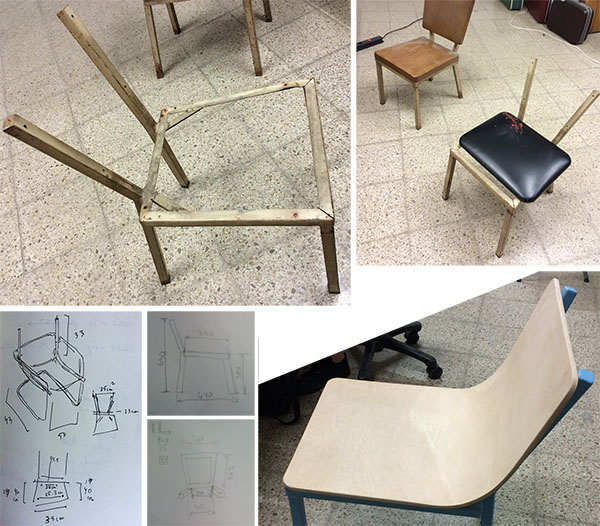
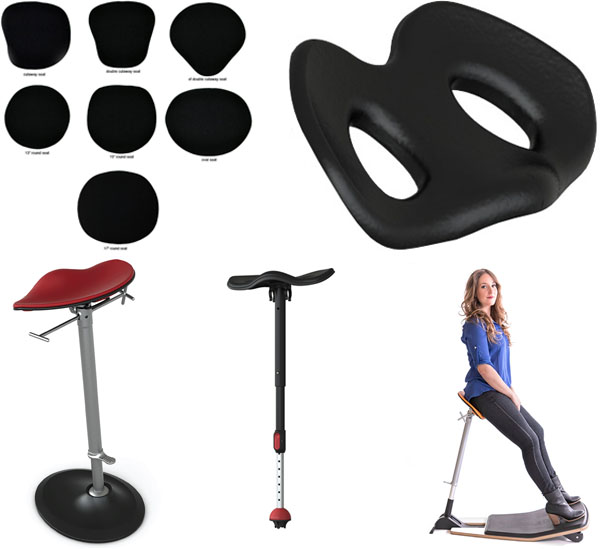
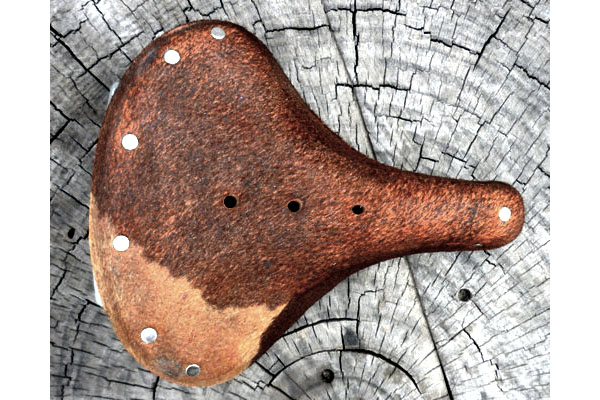
SCAN: butt as beginning form
- Skanect and Kinect
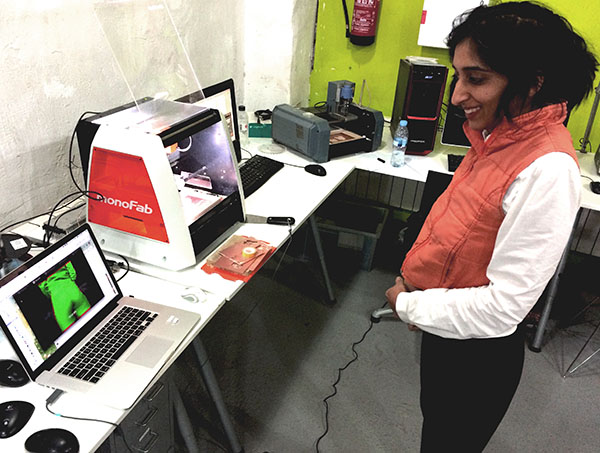
PREP THE .STL FILES: alter in Blender
- Tips for Blender:
- three ways to look at measurements in Blender:
- ruler tool
- using a line as a measurement, as you would in Rhino
- settings: so that when you click an object, you see its dimensions
- to select all ~ hit "a" in object mode
- very cool tool is "G" plus scroll to influence a gradient in the mesh
- F to fill holes
- control-alt-shift-M to see non-manifold parts
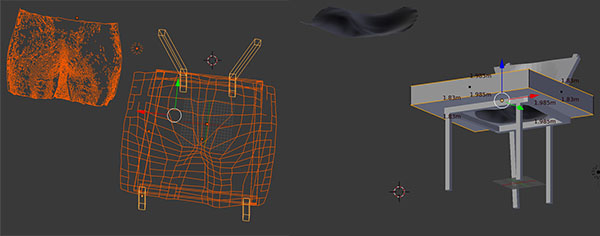
- My process with this scan:
- cut the model imported from Skanect
- remesh, fix
- then: select object, tool on the right, boolean modifier, then intersect. Using the eye icon is a live preview.
- Making a flat base for the milling file: To get all the points into one plane, select the line of points in edit mode, then s for scale, z for axis, 0 to set them all to "0," which will be in a line.
- Cut the model ~ make a path in Illustrator and extrude and Boolean-intersect or Boolean-difference in Blender:
- took a shape from this site
- created a path in Inkscape
- Great tutorial on how to make an .svg in Inkscape and importing into Blender
- I used this, plus some Illustrator strategies, to make the outline for the seat
- THEN, create a shoulder rest in Blender
- get all points in a line for a flat bottom
- check dimensions
LAYOUT THE PARTS for milling: RhinoCam
- make a bounding box the size of the material (my foam block = 600mm w x 1250mm l x 18mm h)
- make a second box that is the flat area around the model
- settings:
- roughing ~ ball mill, diameter 12mm
- feeds and speeds: 1200 all
- profiling, parallel
- tool: finishes, also 12mm
- cut parameters: stepover 2mm
- generate g-code and save that file with a .nc extension
- G-Code export.
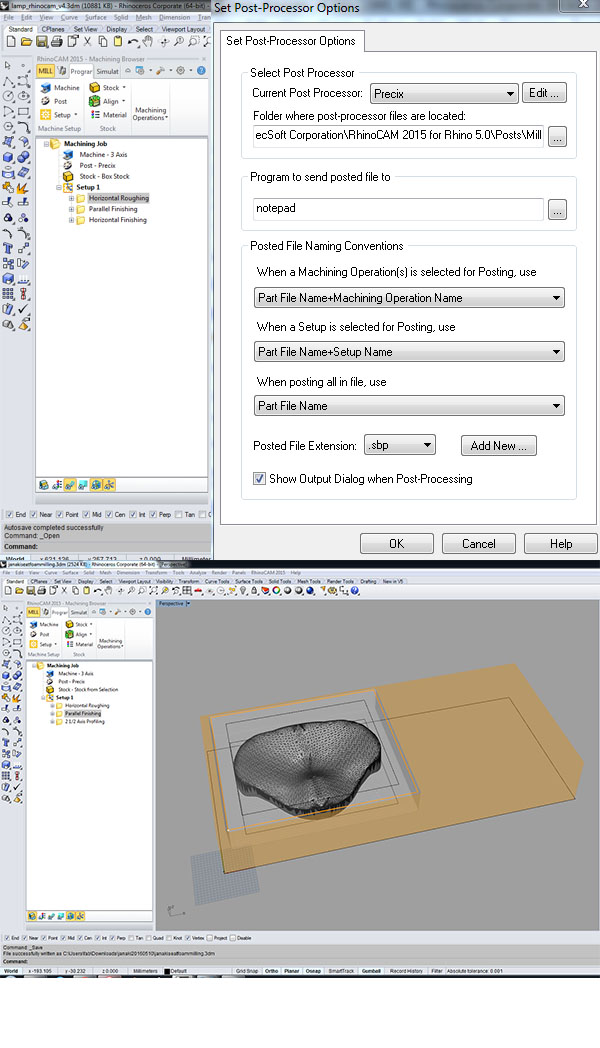
MILLING FOAM: using Precix
- Cross-tighten the collet.
- Be aware of the 3 reset buttons.
- Open gcode text file on the computer that controls the Precix, using the "Cut 2-D" program.
- Settings:
- Replace F1200 w F6000 in g-code
- pass depth 150mm
- spindle 12000
- feed 200-300
- plunge 15
- mill with Precix: loud, exhausting, and beautiful
- Sand the edges to make a delicious, baby-smooth surface.
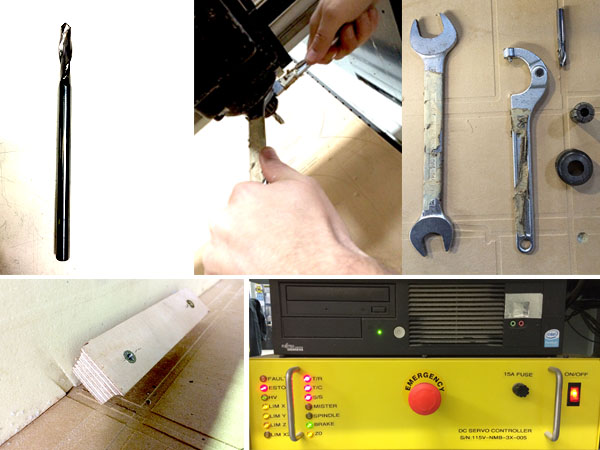
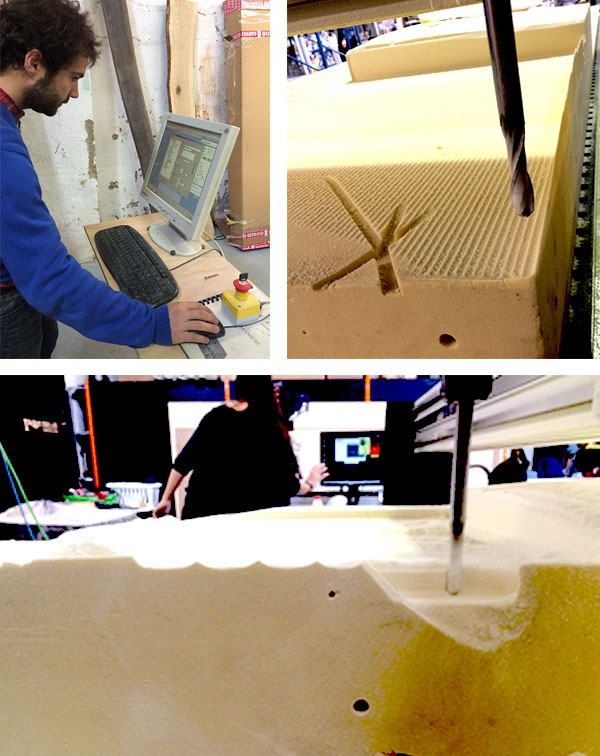
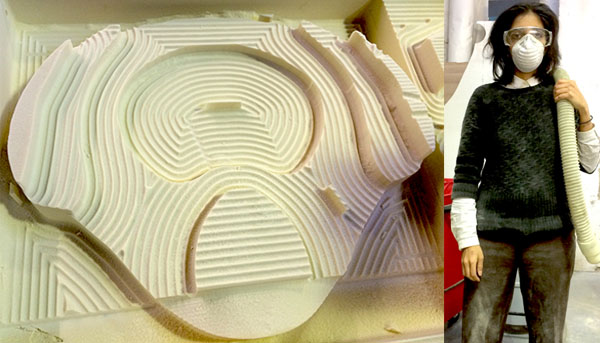
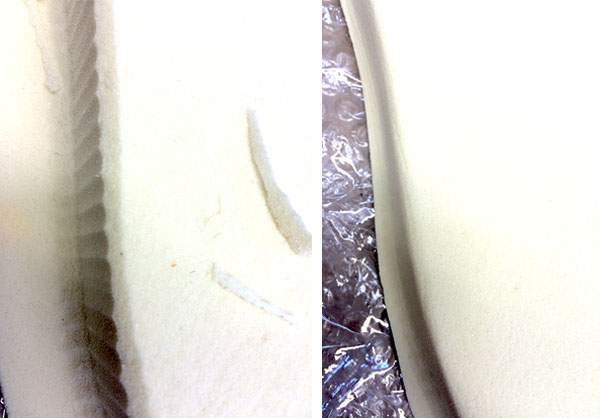
LASERCUT FABRIC: Rhino and the Epilog Laser
Working to make a pattern based on a design I saw in a store in Born. It's from Memphis designer Nathalie du Pasquier.
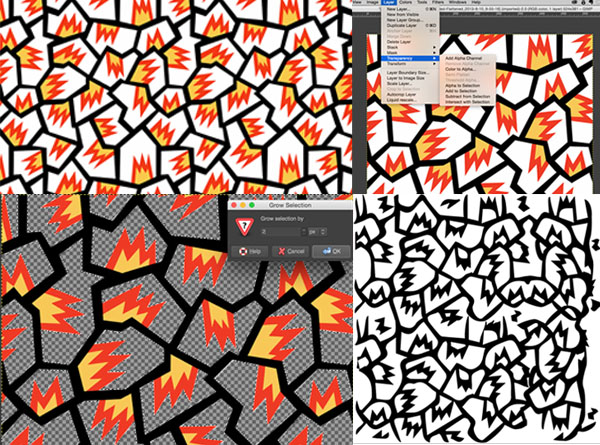
- TUTORIAL in Inkscape
- In Gimp, open the .jpg and crop.
- Create Alpha Channel. (see screenshot above)
- Select bkgd with Magic Wand.
- "Grow" selection by 2px.
- Use eraser.
- Save as .png.
- Then in Inkscape, "path" and "trace bitmap."
- Keep "stack scans" checked and keep "remove background" checked.
- Prep the file in Rhino.
- import 2 files into one: the pattern file and the file with outlines of the pieces:
- explode
- make 2-d
- place
- select cutting objects
- trim
- get rid of duplicate lines
- hatch: select curves, name what's inside and outside for the fill by clicking
- 14 tests to get it right, then about 2 hrs of laser engraving:
- SETTINGS:
- Settings to cut burlap are SPEED 80 / POWER 30.
- Settings to engrave on burlap are SPEED 30 / POWER 100.
- Use "Grid60"and "scale 3" ~ it's a hatch pattern in Rhino.
- OTHER TIPS ON FABRIC SIZING:
- Blender and Grasshopper have functions for unfolding.
- When you make darts, even if the fabric doesn't meet exactly, cut the darts in a slightly different place and add another layer of fabric. The resin will close 1mm or so of gap.
- This idea did not work:

This pic is taking the Blender model and tracing the outline of the profile view. Of course, it didn't work: the line in real life, being curved, is much longer than the profile view. I thought I would try it anyway! I didn't use side faces at all in the end. - Note: Bed of the Epilog = 800 x 500mm
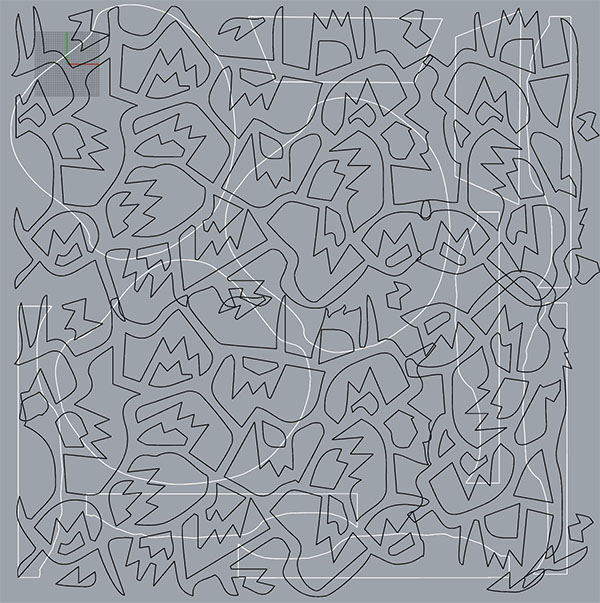
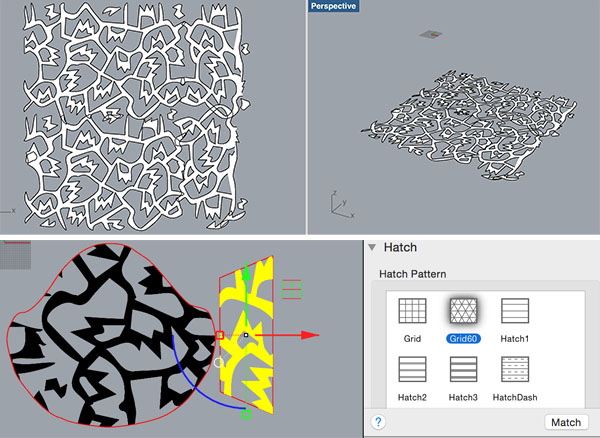
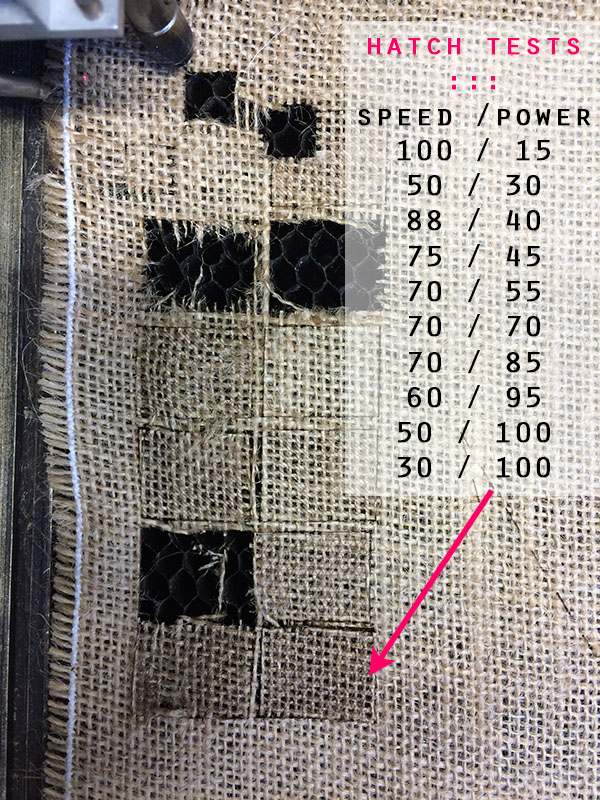
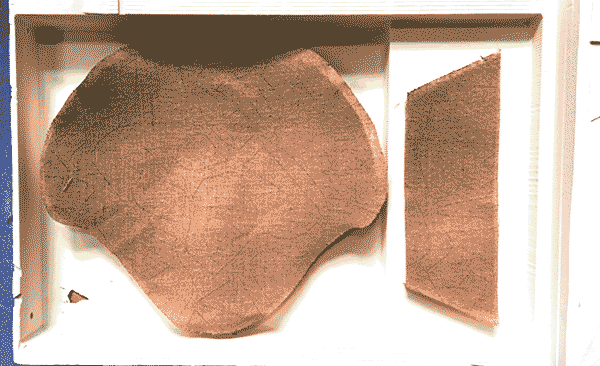
COMPOSITING WITH RESIN
- see image of layers from Gabriel Tanner Pasetti's site:
- Resin is "SuperSap." Only 20% epoxy. But still toxic as hell, causing a burning feeling and temporary rashes when it contacted skin with both Xavi and I.
- With a double-sided mold, leave 1-2mm for the fiber.
- Spatula or piece of wood for pushing in the resin is better than a disposable brush. You can see the fabric change color when the resin soaks all the way through.
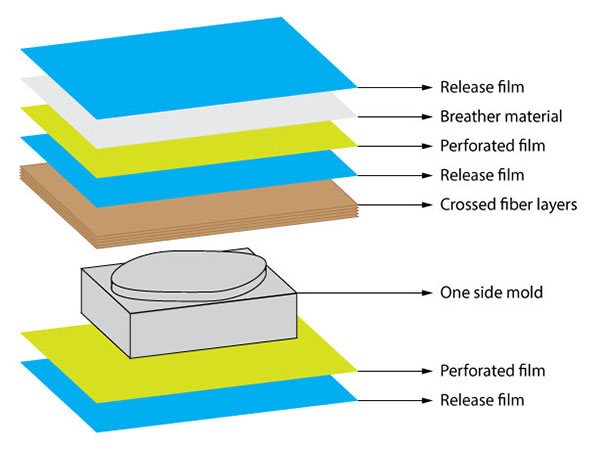
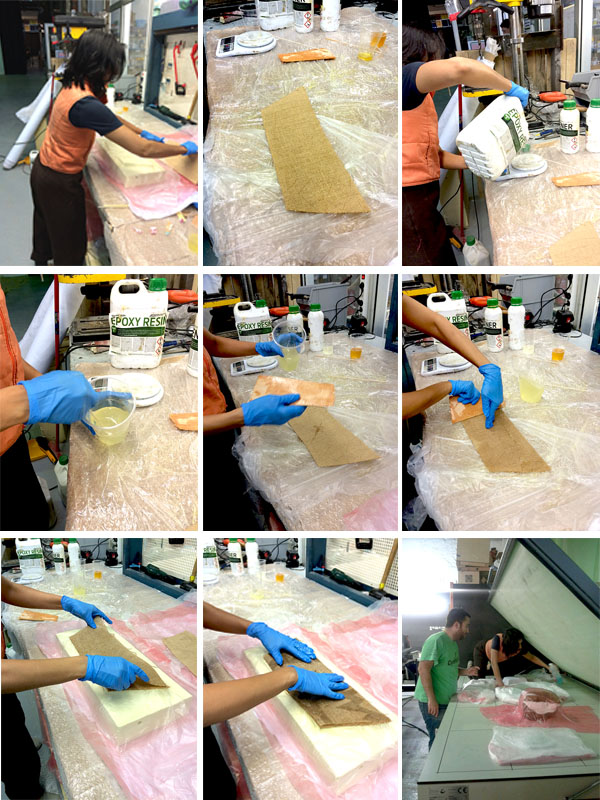
VACUUM-MOLD THE FORM
Terrible problems with vacuum, resin squishing everywhere ~ I recommend trying to be slow and careful in sizing and covering the layers. This is relevant if you have a bigger object.
Leave it overnight.
RELEASE
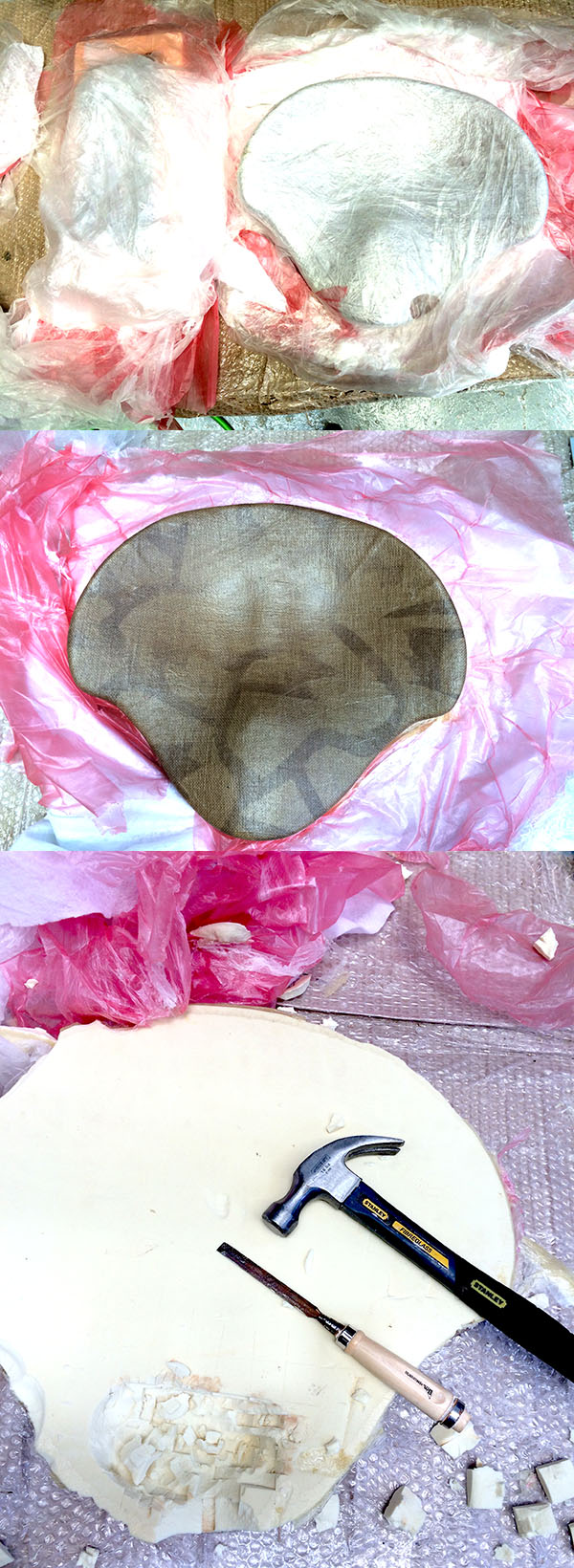
Looking beautiful! However, to get the seat to release, I got Martin's advice about using a knife to grid the foam from the bottom and chisel it out. I did this enough to get a little play in the form, so I could wiggle it.
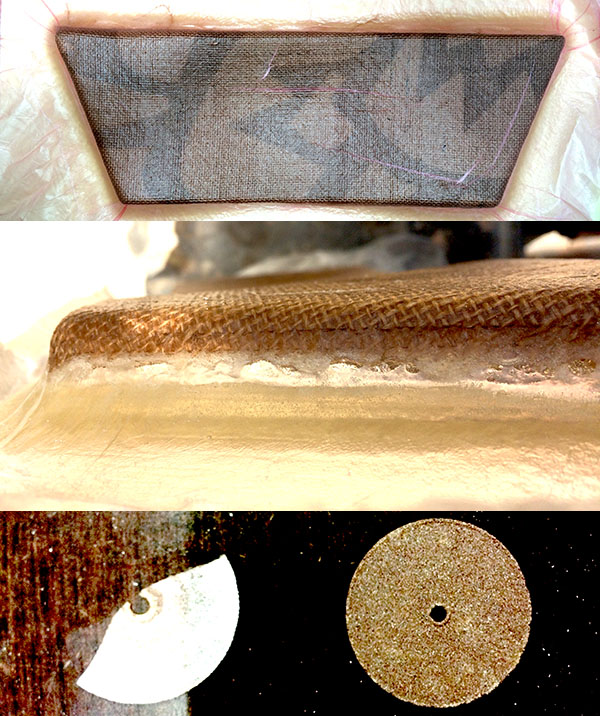
The resin from the top fused to resin pooling at the bottom, sealing in the foam mold. (See that in the middle picture above.) I used a sanding disc on a Dremel to release the edge. The sanding disc doesn't last ~ its center diameter erodes and the disc will fly off, so wear glasses! And the discs are fragile.
ASSEMBLE THE CHAIR
Spray painted the chair with Canary Yellow matte spray from Montana, which is a super-hip spray paint store near Arc de Triomf.
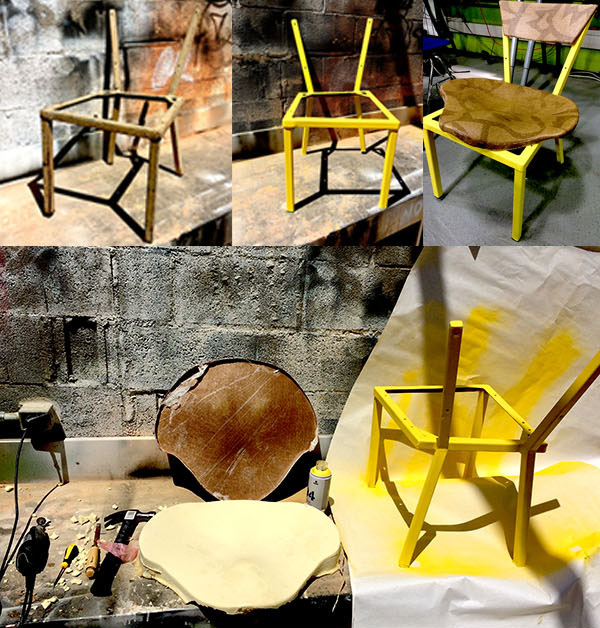
FILES
THEORIES, EVENTS, IDEAS
LECTURE: MARK STEVENSON, on the Atlas of the Future
Mark Stevenson is a futurist. Here is "Atlas of the Future."
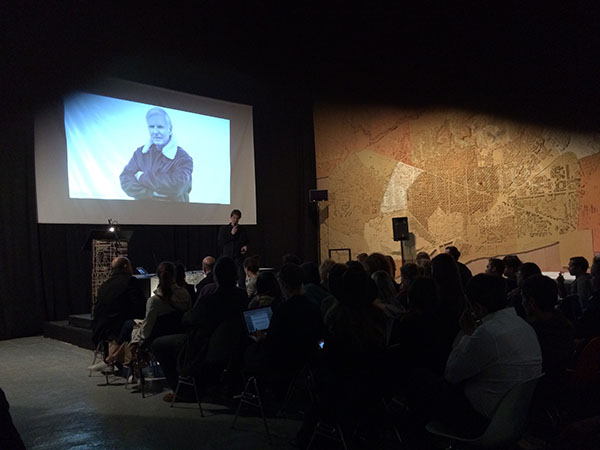
I found his way of talking made it seemed like he was introducing new ideas or provocations, however, what he was talking about was old hat at this point to me, and to the crowd at IAAC in general, I think. Many Barcelona people and IAAC people are involved with this project, which is why I might already be familiar with what he's presenting.
Some notes / thoughts / questions:
- the "Enernet" of connected energy
- How to use / feel confident w technology.
- Disruptive strategy and extrapolated graphs? How do they go together?
- Influence not by wealth but by deeds. Philanthropic wealth-giving.
- How do we relate to each other? So, what might humanity, justice, and equality look like 2500 yrs out?
- Bitcoin: many ledgers on many machines: this is how it is unhackable. This is the "trust" - it is too distributed to be manipulated. * Ah, I finally understand "trustlessness." It is like GIT. *